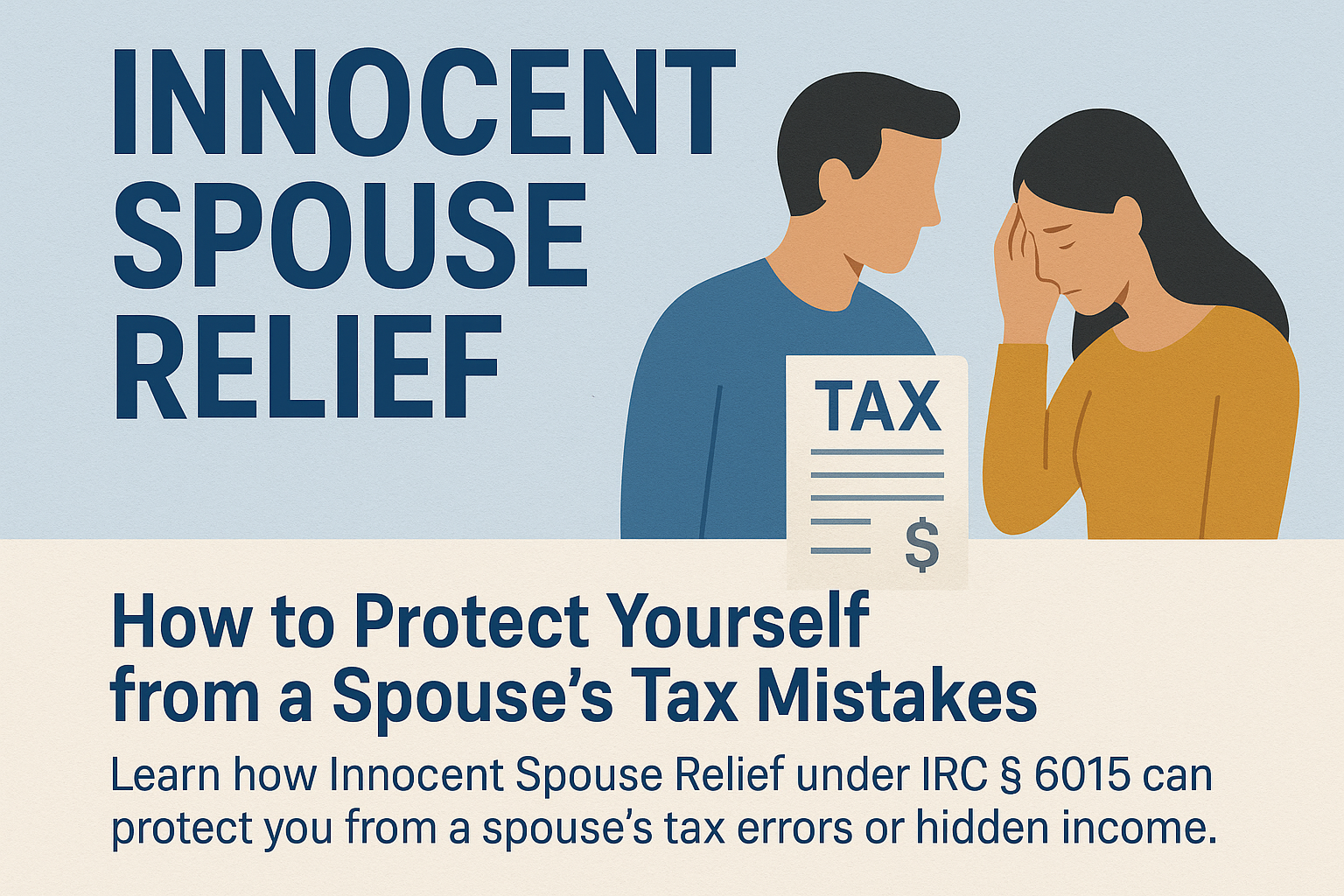
When you're married, you share your life with another person, but sometimes you don't want to share their tax debt. When you file a joint tax return, both spouses are jointly and severally liable for any taxes, penalties, and interest that arise from that return — even if the understatement or error was caused by your spouse.
But what if you didn’t know about your spouse’s income, or they misled you about the return? The IRS recognizes that it may be unfair to hold one spouse responsible for another’s actions. That’s why Innocent Spouse Relief, provided under Internal Revenue Code (IRC) § 6015, exists.
Innocent Spouse Relief is a provision that allows a taxpayer to request release from liability for tax errors attributable to their spouse or former spouse. According to IRC § 6015(b) and Internal Revenue Manual (IRM) 25.15.3, the IRS can relieve you of responsibility for additional tax, interest, and penalties that stem from your spouse’s mistakes on a jointly filed return. (I'd recommend referring to these sources if you intend to pursue this relief yourself.
This relief can apply to:
If approved, the IRS may remove your obligation for the portion of tax debt related to your spouse’s error.
To qualify, you must meet several key conditions outlined in IRC § 6015(b):
The IRS will review your financial situation, level of knowledge, and whether you benefited from the unreported income or deduction. One of the most common places to see this relief is when one spouse has been abused.
The IRS takes abuse and financial control seriously when considering Innocent Spouse Relief. If you were in an abusive or coercive relationship, you may still qualify even if you were aware of errors on the return.
According to IRM 25.15.3.9, abuse may include:
In such cases, the IRS recognizes that abuse can impair your ability to know or challenge what was reported. The presence of abuse can significantly strengthen your claim for relief, particularly under Equitable Relief provisions.
Under IRC § 6015, there are three forms of relief the IRS may grant:
Each category has unique qualifications and documentation requirements, which are detailed in IRM 25.15.3.
You can request relief by filing IRS Form 8857, Request for Innocent Spouse Relief.
The IRS will evaluate your eligibility based on:
It’s important to file within the required time limits. In most cases, you must apply within two years from the date the IRS first attempted to collect the tax from you. If you think you may be qualified for this type of assisstance, do not hesitate to contact a legal professional to discuss your situation. Processing times for this type of relief can be quite long, half a year or more, so the sooner the better. Having help with your application will also allow you to avoid common errors and increase your chances of success.